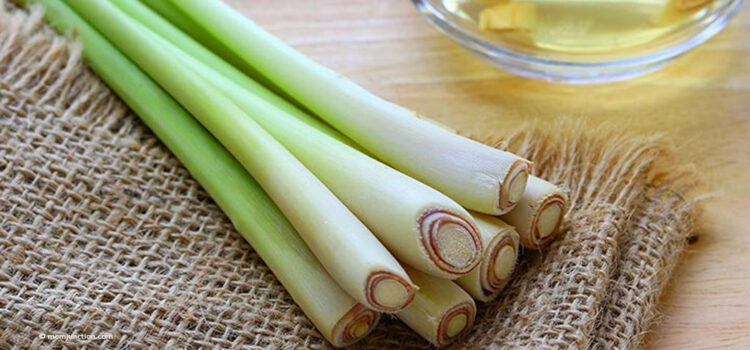Health Benefits of Lemongrass

According to an ancient Malaysian legend, lemongrass was once considered a sacred herb. Warriors believed that if they applied it as a balm to their bodies—accompanied by a special prayer, of course—it would prevent a sword from penetrating their skin. While we are in no rush to test this impregnable “magic cloak,” we do appreciate lemongrass for the other dangers it wards off: anxiety, headaches, fever and a bad night’s sleep, to name just a few.
Zesty Citrus Flavor
Most people know lemongrass for the flavor it adds to Thai food. It is the refreshing citrus nip that balances the hot chili and creamy coconut milk in the ubiquitous Tom Kha Gai soup. In fact, lemongrass originated in India, and then traveled onto Southeast Asia. It became a staple ingredient in the cuisines of Indonesia, Malaysia, Thailand, Cambodia, Laos and Vietnam. It also crossed the oceans to the Caribbean, where its lemony taste balances zesty island flavors.
In food, lemongrass is remarkably adaptable and can be used fresh, dried or powdered. As an ingredient, it complements pork, beef, fish, poultry and seafood. It is equally versatile as a remedy for everyday ailments, and its soft, citrus flavor and aroma make using it a pleasant experience. In most instances, you’ll want to use the bruised stalk. To do this, take a stalk, cut off the tip (at the root end), cut a piece from the bottom approximately two inches long, peel off the dried outer layer and then crush it lightly with a mortar and pestle to release the oils.
Relaxation Purposes
Two or three of these bruised stalks, chopped into half inch pieces and steeped in a pot of nearly boiling water, make a tea to aid digestion, ease menstrual cramps, reduce stress and promote a calm night’s sleep. Take those same stalks and rub their oil over your skin and you have a natural mosquito repellent—lemongrass is a common ingredient in candles and incense used to repel bugs. They can also be used topically for anti-fungal and antiseptic purposes. Yet another way to use the stalks is to tie them into a sachet and drop them into a bathtub for a soothing aromatherapy experience. Given the stress of modern life—and the risks such as heart attacks that come with it—we consider these aids to relaxation as beneficial as the Malay warriors surely found their use of lemongrass centuries ago.
Produced Worldwide
Although lemongrass thrives with full sun in a tropical climate, it is now produced in countries as far-flung as China and England. It is a perennial, although in places that get frost, it will act like an annual and go dormant in the winter. Beware: while lemongrass is fun and easy to harvest at home, it spreads through its roots and grows like a weed. We recommend cultivating it in a large pot.
How to Grow
1. Purchase three to five mature stalks. They should be fresh, full at the bulb and moist. Try to select those with root buds still visible.
2. Cut a few inches off the top of each stalk. Peel the dry outer layers all the way to the bulb.
3. Put the stalks in a jar of room temperature water. Keep the jar in a window in the sun. Make sure to keep the water level up, so the stalks don’t dry out.
4. In approximately one to two weeks, you will see roots. When the roots are around an inch long, transfer the stalks to a pot, using a sandy soil. Cover stalks about an inch above the roots.
5. Keep the pot in a sunny place and keep the soil moist. Before long, your few stalks will become a large cluster that can be cut whenever you need. Keep the pot away from cats, since they love it and will demolish it.




